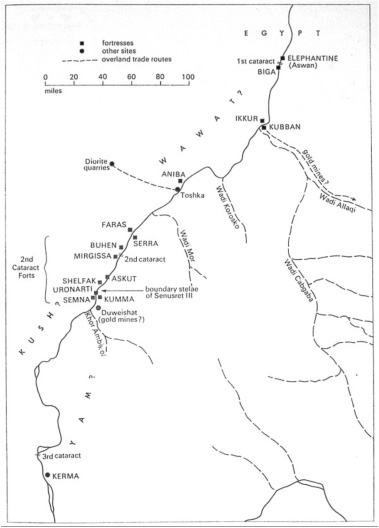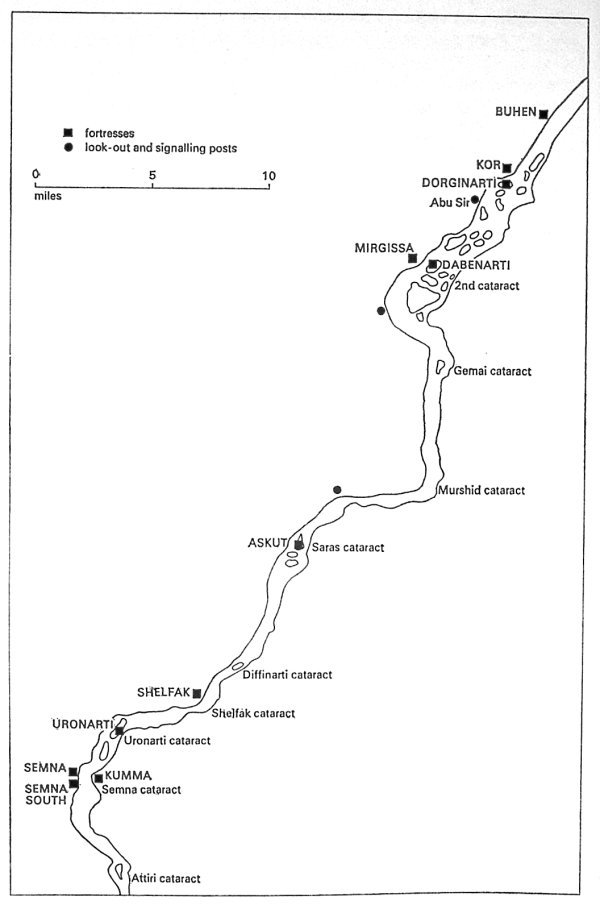Posted at Feb 17/2010 10:44AM:
Andrew Mathis: A quick question for you. On p.5 of Spalinger, I notice he says that in the Middle Kingdom "There was a standing army, and it was considered to be a real profession for the youth". Is this referring to provincial armies? If I understood you correctly today, there was no standing national army, right?
Posted at Feb 17/2010 10:44AM:
Prof. Bestock: The short answer is that I disagree with Spalinger. There is not, in my opinion, any solid evidence in the Middle Kingdom of "soldier" as a profession (with the exception of the Nubian mercenaries) nor of "general" as a career choice. There continues to be no real distinction between military/mining/trading titles and organization. The only evidence we have of anything like a standing army would be the garrisons of the Nubian fortresses. Those forts DO suggest that there was always some soldiery at all times in the 12th Dynasty at least, but it's specialized (and not divorced from trade and mining - the whole purpose of the fortresses is something we will try to unravel in class soon!) Perhaps it'd be best to unpack the term and say, what do we actually mean by standing army? Use of the military is somewhat more regular in the Middle Kingdom than it was in the Old Kingdom, at least as far as our evidence allows us to state, but it was nothing like the militarized state of the New Kingdom. So I guess I shy from the term in part because I like to draw the distinction more clearly between MK and NK than between OK and MK, but there are changes in both times and using absolute terms without defining them may be unhelpful.
That complicates things, but I hope it helps! You don't have to agree with either me or Spalinger - I encourage you to form your own opinions.
We have very few depictions of the king himself in "warfare" aspect from the Middle Kingdom (or the Old Kingdom for that matter) which presumably has more to do with preservation of evidence than their original absence. It also speaks to issues of decorum - most of the surviving images of war in the Middle Kingdom come from private tombs, and it was absolutely not OK for a private person to put a picture of the king in his tomb at this time. We still do get hints of the importance of the military aspect for defining the king, however. So here Senwosret III is in a nice royal static pose, not smiting or anything, but he's stepping on the 9 Bows (which is a generic term to describe all the enemies of Egypt). He is also wearing a bull's tail, which we've seen going back to the Narmer palette, but that's less specifically martial and more royal ceremonial at this point.
A watercolor copy of a scene from the tomb of Intef at Thebes, 11th Dynasty (2nd half of the Dynasty, during the Middle Kingdom). Defenders are Asiatic: beards, long hair with fillets, colorful kilts
Boating scene: Tomb of Intef at Thebes, 11th Dynasty (MK). Our evidence of fighting from boats is really rare!
Wrestling scenes above siege scene from a tomb at Beni Hasan, Middle Egypt, early to middle Middle Kingdom.
Asiatic tribute bearers (not prisoners or victims of war in this depiction) bringing booty to the tomb owner. Beni Hasan, Middle Kingdom.
Composite watercolor drawn from several scenes in tombs at Beni Hasan, Middle Kingdom.
Be wary - Hamblin wants to put Merikare during the First Intermediate Period but this is no longer generally accepted! This text tells us more about how the Middle Kingdom (when it was probably composed) viewed the FIP than about the FIP itself. It is less purely historical than it is legitimizing of the reimposition of national kingship in the Middle Kingdom - how much can we trust it? This portion would certainly seem to present a defined set of real actions. Was this how the reunification was accomplished? What other evidence can we bring to bear on the issue? How can we use literary sources appropriately?
We didn't get to discuss Sinuhe in class. This is a Middle Kingdom literary text. The basic background of the story seems to be that Sinuhe was at court when the king was assassinated. The crown prince was off on campaign and was summoned to return, which he did ("the falcon (ie Horus) flew") with his retinue but not his whole command. Sinuhe is fearful in this confused time and runs away to the Levant where he gets treated very well and makes a nice life for himself. Eventually he wants to return home, however, and the king welcomes him back. The second quote from the text I've given you here is a sort of ode about the king. We may not have many actual portraits of MK kings engaging in battle, but boy this paints a perfect picture of the martial abilities and roles of the king! It's used as a sort of way of saying that the new king is a worthy king now that his dad is dead. Worthy because of his military prowess.
Weapons and warfare on a coffin from Deir el Bersha (Middle Egypt, Middle Kingdom) as on decorated tombs.
Models of many sorts were placed in tombs of the Middle Kingdom. Sometimes ranks of soldiers (here Nubian bowmen).
Slain soldiers from Thebes, currently dated to the very early 12th Dynasty (reign of Amenemhat I).
More slain soldiers.
The coordinates for Uronarti: 21° 31′ 33″ N, 30° 59′ 25″ E Go a little tiny bit northeast of this and on the north end of that island you'll see the remains of the fortress. It appears likely that the "palace" is either mostly or entirely under water. But most of the area just outside the fortress, which includes production areas, has never been properly explored. The architecture of the fortress itself has also never been properly recorded.
A question came up in class today that I could not answer regarding administrative titles of the fortresses. I have been unable to find any specific titles about fortress administration, but there are many cases of general administrative titles found in Nubia from vizier on down. In some cases these indicate activity of the individual mentioned in Egypt rather than Nubia, so for instance the vizier may have been ultimately responsible for sending grain up to the forts rather than physically present in Nubia. We've got many jmy-r msha guys though, and directors of army scribes, and an overseer of gold workers, etc. Titles from the royal and provincial administration in Egypt. The range of titles (and the ubiquity of scribes and seal bearers) indicates the degree to which the entire administrative apparatus of Egypt was employed in Nubia; these were not simply exotic military posts. We get priests, too, and some people called approximately "middlemen" who have been thought to be interpreters/intermediaries with the local populations (this is uncertain). But it seems that the fortress administration was simply folded into the ordinary administration and didn't have specific posts (perhaps this makes sense if garrisons were rotated frequently?) Hope this helps!
Prof. B
Below is a map showing in detail the location of the Middle Kingdom fortresses we've discussed:

This one is good for the forts of the southern half of the sequence:

Posted at Feb 27/2010 04:15PM:
Hiu Wai Lee: It seems that the last map on the page includes Buhen and Mirgissa as the southern fortress sequence. But I remember the two forts were built by Senwosret I who was responsible for the northern ones. How do we usually establish a division between northern and southern forts on the landscape?
Posted at Mar 01/2010 12:56PM:
Carrie: This bottom map is just a detail map of the fortresses in the southern region of the area depicted in the top map (and is NOT a map of "the southern types"); I think you might be confusing location with construction type. Remember that we establish the division of forts in the landscape based on their construction: the two types are "Plains Type" and "Island/Promontory Types." The plains types are typically in the north and the island/promontory types (with the less regular construction features) are typically in the southern portion because of the landscape around the cataracts -- but Buhen and Mirgissa are the most southern of the plains types. Buhen and Mirgissa were located at the frontier established by Senwosret I.
